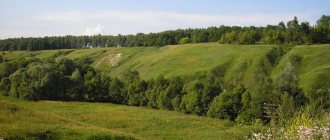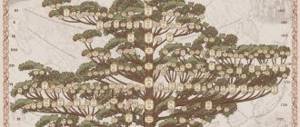- Reports
- Animals
- Beavers
Beavers are mammals that are among the largest rodents on Earth. Scientists suggest that the ancestors of these animals originally lived in Asia. They were huge. Their body length exceeded 2.5 meters, and their weight reached 350 kilograms.
Modern beavers, living in freshwater bodies of water with rich coastal vegetation, are significantly smaller than their extinct predecessors. Adult individuals weigh 30-45 kilograms and are about 1.3 meters long. Females are slightly larger than males.
These animals have a large head, a narrow muzzle, small eyes, wide short ears, a squat body, a rather long tail similar in shape to an oar, short five-fingered limbs with strong claws. Since beavers lead a semi-aquatic lifestyle, they have swimming membranes on all limbs (and they are better developed on the hind limbs than on the front ones).
Beavers have very beautiful fur. It is usually brown, but can also be dark red, chestnut, or black. It consists of several layers and gets wet slightly in water, so it protects well from the cold. Animals regularly groom it by combing it with the forked claw of the second toe of the hind limbs.
On land, beavers move clumsily, but when they get into the aquatic environment, they become agile and fast. They dive great. They can stay underwater for up to 15 minutes, swimming approximately 700-750 meters during this time period.
In summer they are active at dusk and at night, but in winter they work even when it is light. When the temperature is too low, they prefer not to stick their heads out of their homes.
Beavers' homes are burrows or huts, the entrances to which are always made under water to ensure safety. The beaver digs a hole resembling a labyrinth where the bank is steep and steep. If the banks of the reservoir are flat and low, then he makes a cone-shaped hut from brushwood, using silt and earth to hold it together.
To maintain the required water level, these tireless workers build dams. They eat only plant foods: bark, tree shoots, grass. They love acorns.
Beavers are distinguished by their loyalty to their partner. They can reproduce after reaching two years of age.
Report on the topic Beavers
Beavers are a genus of mammals representing the order of rodents. There are two species of these amazing animals in the world - the Canadian beaver and the common river beaver.
Beavers are semi-aquatic animals that are quite large in size. The body length of these animals can reach 1 meter with a height of 35 cm, and their body weight reaches 35 kg. The beaver's body ends with a wide, flipper-shaped tail up to 30 cm in length and 13 cm in width. The tail has no hair and is covered with horny scales. Their front paws are small, since the main motor work is performed by the hind limbs and tail. Thanks to the forked claw located on the hind paw, the beaver combs its fur, putting it in order.
A notable feature is the beaver's teeth, which grow throughout his life and he is forced to grind them down on tree bark so that they do not reach large sizes. The teeth have strong enamel and are capable of self-sharpening.
Despite the small ears hidden in the fur, the beaver has excellent hearing.
Beaver fur has two layers, which provides the animal with protection from the cold and waterproofness for the undercoat due to the high density of the top layer. Additional protection from low temperatures is the fat layer located under the beaver’s skin.
The beaver's coloration is brown and has a black tail. The tail contains special glands that produce a special substance that carries information about its owner (age, gender). This substance is called beaver squirt. Beavers carry the smell of this stream along the entire border of their habitat, marking their territory.
Beavers live in families of up to 8 individuals, sometimes hermits are found. Families consist of parents and children born within two years. The size of their holdings depends on the food supply and can range from small to huge territories.
Beavers communicate with each other using postures, scent marks, striking the water with their tails, and whistling calls. The period of their activity is observed at night and twilight. All day long they are busy building their huts, gnawing a tree trunk with their teeth at the very rhizome and gnawing the bark as food. In preparation for winter, they prepare food, and with the arrival of snow, they spend most of their time in their home.
In the wild, beavers live on average about 15 years; in captivity, their age can reach even more than 20 years.
Beaver Kitchen
Share:
Cover author: Yulia Skorobogatova for TD
Choking and coughing, Daniil confidently talks about his plans for the future. Everything will work out, there’s just one caveat - we urgently need new lungs
“They told me that, at best, he would live to be 25 years old,” says Natalya, mother of Daniil Bobryshev, who was diagnosed with cystic fibrosis at three months. “When he was born, we were just starting to deal with this disease. The best situation with the treatment of patients with cystic fibrosis at that time was in Germany - it was believed that they could live up to 40 years there. Well, how could I get to Germany?”
Today in the West, the life expectancy of patients with cystic fibrosis is approaching 60 years. In Russia - 16-21 years old, in Moscow it’s a little better - up to 30 years old. Daniil is now 21. Constant treatment gave him the opportunity to grow up, go to school with his peers. He was a little self-conscious about the coughing fits, but overall he didn't feel any different. The deterioration began in high school, but Daniil did not pay attention to it and even took up powerlifting. While he had the strength, he squatted with logs right on the hospital grounds, despite doctors’ prohibitions. “I never conflicted with him about this, but I was worried, sometimes I would start muttering that, Dan, you should be careful, and he would say to me: “Mom, thanks to this, I’m just moving somehow, I’m living.” And he took all the first places!”
Photo: Yulia Skorobogatova for TDaniil
But three years ago, a dangerous microbe got into the lungs, unprotected from infections, as often happens with patients with cystic fibrosis. Daniel was unlucky; he got Achromobacter - a very aggressive bacterium that gets used to any antibiotics. Since then, Daniil’s condition has been deteriorating; he also experienced open tuberculosis; pneumothorax is when a hole appears in the lung and it deflates like a balloon. Now there is only one small piece left of both lungs; almost all the time Daniil breathes in a mask, from which bedsores have already begun on his face. Since November, he has not left the hospital, every step is difficult for him, he cannot talk for a long time, and for a year he has been in line for a lung transplant, which he simply may not receive.
It is unclear when this will happen; a donor with a fairly rare third blood type is needed. But the point is also in various legal difficulties with which this operation takes place in our country.
Photo: Yulia Skorobogatova for TD. Daniil spends almost all his time in the ward
It became impossible to play sports, all that was left from powerlifting were tattoos on his emaciated knees, and Daniil became interested in cooking. “I actually wanted to become a cook, but with my illness they won’t issue a health certificate. Therefore, I will cook at home and host a cooking channel. It will be called "Beaver's Kitchen". The nickname “Beaver” stuck with me since childhood; in the gym they called him “Satan the Beaver” because he killed himself in training and trained others to the point of unconsciousness. When I walked around with a beard, it was “Bearded Beaver,” and it always was like that. For the blog, they drew me a picture of a beaver cook. There will be original dishes by Daniil Bobryshev, I don’t cook according to recipes, maybe there will be a separate section - a sports diet.”
Finding himself a prisoner in hospitals, Daniil dedicated his YouTube channel to cystic fibrosis and talks about it on all possible social networks. He openly shares the details of his condition and struggle, even posting a video of a recent asthma attack. It was the worst attack he had ever had. “I barely pumped him out at all - I administered prednisone in one minute.” In the video, Daniil tells how the doctor on duty gave him phenozepam, because when he suffocates, he has a panic attack. In general, from his story it is obvious that each such attack is an absolutely critical situation in which he and his mother decide for themselves how to act. “I can’t leave him alone until the doctors arrive, it may be too late - if I go out into the corridor, always with the phone - it rings, and I run back like a bullet.” Writing on his blog that the morning after the attack his legs were very swollen, Daniil says that it’s something like “moving from a skinny to a fat bass—a revolution of souls.”
Photo: Yulia Skorobogatova for TD. Daniil shows off his tattoos
In general, Daniil often sneers at the situation: when he finished with the inhalation and took off the mask, he was only shaking a little, but he smiled and explained: “Don’t be alarmed, the medicine makes me sick, it will go away in a couple of minutes.”
Almost every day Daniil receives letters with questions, which he always answers. “Lately I’ve been trying to speak in simple language, without medical terms, so that those who have nothing to do with the disease can also understand. Parents often write from all sorts of remote villages, where no one has even heard of this. I encourage them not to despair, I tell them what to do and how to do it. Our doctors also sometimes come by ambulance, I say: “Cystic fibrosis,” and they ask: “Is it something with the bones?” It’s very sad, I try not to get angry with anyone, but I have panic attacks and sometimes it’s hard to control myself. If I yell at someone, I feel very ashamed later.”
Photo: Yulia Skorobogatova for TD. Daniel
Daniel stops shaking, and we discuss possible routes for his future trips - of course, he wants to see the whole world! “Ideally, travel the length and breadth of Russia by car. Then Armenia, Georgia, that’s all. Then - China, Japan, other cultures are very interesting to me, I want to see with my own eyes.” He talks about it as if he had the flu - now the temperature will subside and he can pack his bag for the trip.
And Daniil also dreams of “creating his own branch of the family tree,” but I don’t have time to ask about this in more detail, because Natalya reminds us: it’s time for us to finish. Daniel's lungs are barely enough for a half-hour conversation.
Later I called Natalya and said that I was amazed by her son’s endurance. “He’s a literate guy, with a mathematical mind, and, naturally, he’s read about this disease a long time ago and knows, maybe even more than others,” she began almost calmly. “I’ve always been steadfast, but now I’m starting to lose my temper.” It was he who smiled in front of you, but yesterday and the day before yesterday he was just in a terrible state: emptiness in his eyes, looking at one point, and so on more and more often... When he began to move poorly, at first he asked me to help with cooking for the blog - wash the chicken there, put. I did everything, took out the camera, filmed, learned how to edit. I really approved of this and was glad that he was doing something to keep things from going crazy. But now we have no time for it at all, the situation is nowhere worse... Sorry, I can’t talk anymore,” sobs were heard in the receiver.
Photo : Yulia Skorobogatova for TD.
Daniil during the period of powerlifting.
A day of Daniil’s life on antibiotics, which are needed to contain the inflammatory process and wait for surgery, costs more than eight thousand rubles. And this is not counting the basic medications that he takes constantly throughout his life. He needs almost 10 thousand rubles a month of the same creon. Part of the medicine is provided by the state, but they have to collect for the rest, because Daniil’s mother was forced to quit her job, and they have no one else. The Oxygen Foundation is helping with the most expensive antibiotic on Daniil’s list—meronem. In addition, the foundation provides social and legal support to patients with cystic fibrosis. Buys medical equipment, pays for visits of services providing palliative care to terminally ill patients. The Need Help fund is raising money to pay for the work of these people. Any amount you transfer can ease someone's sigh. Perhaps this will be the last breath without pain, or maybe it will be the happiness of breathing deeply, which we value so little when it exists.
Repost.
“I kept getting dirty looks.” Russian women about life in India
Russian women who lived in India told Snob about the place of women in Indian society, harassment and attempted rape
Psychologist Maryana Bezrukikh: Fifty-year-olds do not understand what will happen next
Psychologist, director of the Institute of Developmental Physiology of the Russian Academy of Education - on how to cope with the feeling of uncertainty against the backdrop of pension reform
“The first time I beat a prisoner, I felt relieved.” Monologue of a prison guard
Why people torture in Russian colonies and how society can deal with it
Lifestyle and habitat
The area where beavers have settled can be easily distinguished from others by very noticeable features. In the places where these animals carry out their life activities, there are always a lot of fallen trees with fresh cuts in the shape of a cone. Hardworking creatures need such material for construction and arrangement. And, of course, an important condition for the existence of beavers in a certain area is the presence of a body of water: a lake, reservoir, river or at least a stream.
These semi-aquatic creatures fundamentally cannot live without water, but without air they can survive for almost a quarter of an hour. Therefore, in case of any danger, for example, hiding from predators: a wolf, a bear or a wolverine, these creatures go under the water, where they sit out. They live in large, friendly communities-families, and their members, if necessary, can report impending trouble to their fellow tribesmen. At such moments, the beaver vigorously slaps the water with its tail. And this signal is immediately perceived by everyone from his company who is within the reservoir.
These creatures work tirelessly in the summer, but they are active at dusk, working all night until dawn, and they rest during the day. Their activities consist of cutting down trees and building. And in this they are helped by their unusually sharp teeth, which can easily crush wood. A beaver can fell a thin tree within half an hour, but sometimes it works on very large and thick ones for several nights in a row. At the same time, his efforts are not only visible, but also heard, and the characteristic sounds of a beaver’s work can be heard for a hundred meters around.
The huts of these animals provide them with a reliable shelter from bad weather and enemies. To build their homes, such creatures dig holes, choosing for this high banks in places where the soil is quite hard. Beaver burrows have the structure of a complex labyrinth. The tunnels in them end in peculiar, large and small “rooms” and have underwater entrance holes. The walls of the dwelling are strengthened with clay and silt, while the bottom, that is, a kind of floor, is covered with wood shavings.
These industrious animals also build houses, which are creations made of branches, decorated with silt and clay. An impressive architectural masterpiece is the beaver dam . Such structures are usually built on rivers, and always somewhat downstream from the settlements of these animals. The point here is to promote the flooding of the river and prevent it from shallowing in the immediate vicinity of beaver dwellings.
Beavers build dams from trees
And this is very conducive to the accumulation of food, and also increases the volume of water flooding in areas occupied by animals, which is an effective measure to increase the safety of living. Beavers take full rest from their labors in winter, spending the entire specified unfavorable period in their hut in a semi-sleepy state. They sometimes go outside, but only to have a snack.
On the one hand, it turns out that beavers greatly harm nature. However, they also bring great benefits to the ecosystem. In places where dams are built and floods occur, a lot of fish breed, aquatic insects reproduce well, and vast wetlands are formed.
These animals, of course, destroy a significant number of trees, but they mainly cut down only those that grow close to water. They don't pretend to be more. Beavers successfully use the trunks of fallen trees to build dams, but they gnaw off branches, various natural protrusions, leaves and bark.
Nutrition
These animals are exclusively herbivores. However, their diet cannot be called poor. Zoologists studying their life and feeding methods claim that their menu includes about three hundred different plants. The availability of rich and varied food is another criterion according to which these animals act when choosing their place of settlement. Consuming bark while working, they love to feast on willow, linden, aspen, birch, poplar, alder and the waste of many other trees. They also eat sorrel, nettles, sedge, reeds, and are incredibly fond of water lilies.
Beavers are very economical, care about the well-being of family members, and therefore make numerous reserves for the winter. They carefully and painstakingly place tree branches on the bottom of the reservoir, where they create a kind of “cellar.” A huge family of beavers is capable of storing more than a dozen cubic meters of such food for the winter. Sometimes it happens that the contents of the pantry are carried away by the river. And then the animals have to leave their cozy shelters and go out into the cold in search of food. This is not only unpleasant, but also dangerous, because in such a hungry time, it is easiest to become prey for predators, for example wolves.
People can also be dangerous for these hardworking and harmless animals. Beaver hunting officially begins in Russia in late autumn and continues until early spring. Fans of this activity, of which there are quite a lot, notice that these creatures are extremely careful. It is best to hunt them armed with a gun.
If you use a trap to catch animals, their valuable fur can be seriously damaged. The meat of these animals is red in color and is considered acceptable for consumption. It tastes like hare. However, it has a peculiar taste, and therefore special seasonings are used to prepare it.
The skins of killed animals are often sold to furriers. A beaver fur coat is considered a luxury, looks elegant and can be very warm. It is believed that such high-quality products, subject to all storage and wearing rules, can last at least a couple of decades. Beavers have been hunted since ancient times for their meat and warm fur. But besides this, the so-called beaver jet . What it is?
The fact is that these animals have a special gland located in the anal bodily area. Outwardly, these are like two bags connected to each other, producing a special secret. This substance is extremely odorous, and therefore beavers use it to mark their territory. However, people even in ancient times noticed that it has effective healing powers. And modern doctors have only confirmed this assumption.
Interesting Facts
- At the beginning of the twentieth century, beavers were on the verge of extinction, so hunting them was completely prohibited, but after a few decades, the authorities again allowed controlled shooting due to a sharp increase in the population.
- Our hero is the largest rodent in all of Europe.
- About ten thousand years ago, during the “Pleistocene,” huge beavers lived on the planet, whose weight could reach up to three hundred and twenty kilograms.
- During one winter period, one family can fell several hundred young trees.
Presentation "Beavers"
#The world around us #Publications #Speech #Primary school teacher #School education
Beavers
“As you know, beavers are kind. Beavers are full of kindness. Anyone who wants good for themselves just needs to call the beaver...”
The beaver first appeared in Canada, which is where it comes from. This is a trusting, intelligent and hardworking animal.
The beaver is one of the largest rodents in Europe. The weight of an adult male can be the same as that of an eight-year-old child.
Beavers have a squat body and short legs. There are membranes between the toes designed to improve swimming.
The beaver has small eyes and short ears. The tail is flat and resembles an oar.
Their color is mostly brown, but some individuals can be black. Weight is about 20-30 kg, body length is about 1 meter.
The tail serves more to maintain balance. With its help, they also regulate body temperature, and it is also a kind of pantry for storing fat. In addition, they slap them on the ground or water, thereby warning each other of danger.
They secrete a special liquid that gives the animal’s fur a water-repellent effect.
In addition to the fact that they are famous for their hard work, these animals are also very brave.
You are amazed at their ability to build. The dams they built are visible even from space.
They show incredible results in their construction. The length of the dams can be 700 meters.
On average, a beaver can cut down 100 trees and build 50 dams in its lifetime.
A case was recorded when a beaver was able to fell a thick tree, the diameter of which was about 1 meter.
They place the entrance to the dwelling under water, and make the mink itself above this level.
Due to the large size of their lungs and liver, they can hold their breath for up to 15 minutes
Previously, the Catholic Church considered the beaver to be a fish, for this reason its meat was eaten during Lent.
Once upon a time there was a time when these animals were in danger of extinction, however, thanks to the measures taken, the situation was corrected.
The animal in its natural habitat can live up to 14 years. Most often, beavers die from being crushed by trees, which, however, they often cut down themselves.
When Indian tribes went hunting, they said a prayer to the Great Beaver.
Monuments have been erected to these animals in the city of Bobruisk.
The image of this animal is on Canadian coins.
What do beavers eat?
Beavers are vegetarians; they are exclusively herbivores. Beavers feed on tree bark and shoots. Beavers love birch, willow, aspen and poplar. Beavers also eat various herbaceous plants: water lilies, irises, cattails, reeds, and this list includes many items.
A large number of softwood trees is a necessary condition for their habitat. Hazel, linden, elm, bird cherry and some other trees are not so important and significant in their diet. They usually do not eat alder and oak, but use them for buildings. But the beaver eats acorns willingly. Large teeth allow beavers to easily cope with tree food. Beavers typically feed on only a few tree species.
In summer, the proportion of grassy food that the beaver eats increases. In the fall, economic beavers begin to prepare woody food for the winter. Therefore, in winter, beavers feed on their reserves. Beavers put them in water, where they retain their nutritional qualities all winter.
The volume of supplies for a family can be very huge. To prevent food from freezing into the ice, beavers usually heat it below the water level. Therefore, even when the reservoir is covered with ice, food will remain available to the animals and the family will be provided with everything they need.
Beavers Research Project
- April 12, 2012
Competition "Children's Research Project - 2012"
Nomination "First experiments"
While walking with my dad in the forest not far from the city, we once saw a strange structure on a stream - a beaver dam. I was interested in this building. We came closer and examined the upper part of the beaver houses - huts. I wanted to know more about the life of these animals. After all, I have never seen such animals in our Tula region before. Maybe they settled here recently? What are their habitats? What are they eating? How are their houses built?
And I decided to learn more about beavers and dedicated my project to this.
Since I had not met these animals before, I put forward a hypothesis: beavers inhabit the Tula region.
The goal of the project: to find evidence of the possibility of beavers living in our area.
Project objectives:
- learn the origin and meaning of the word “beaver”;
- find out where beavers are common;
- find out the features of their appearance, lifestyle and nutrition;
- learn interesting facts about beavers.
Object of study: beavers in the Tula region.
Methods and techniques:
- analysis of thematic sources of information,
- observations,
- samples,
- experiments.
Work plan
- Search for information about the origin and meaning of the word "beaver".
- Search for information about the distribution, appearance, lifestyle and diet of beavers.
- Experiments: what do beavers eat better (are they herbivores or also eat fish and animal meat; what types of wood do they prefer, what vegetables do they prefer according to their taste).
- Beaver observations.
- Search for interesting facts about beavers.
- Preparation of materials in the form of a report.
- Preparation of presentation and defense of the project.
The progress of the work is outlined in Appendix 1 and Appendix 2, presentation "Beaver Research Project"
Conclusions:
- Beavers are active in the evening, at dusk.
- Of the vegetables offered: carrots, potatoes, cabbage, beets, the beavers liked carrots best.
- Beavers are herbivores. Fish and meat are not used for food.
- Of the proposed tree species: branches of aspen, birch, linden and oak, beavers like aspen and birch more, and less - linden. They refused to gnaw the oak tree.
- My hypothesis about the possibility of beavers living in was partially confirmed: in the spring I discovered that there were no beavers on the stream where I made my observations: the dams and huts were destroyed, there were no traces of their activity. However, on the banks of the Upa River, my dad and I found a family of beavers. Perhaps our beavers moved in.
Practical results:
- Information about the origin and meaning of the word “beaver” was found and compiled.
- Information about the distribution, appearance, lifestyle and nutrition of beavers was found and compiled.
- Interesting facts about beavers have been found.
- I have empirically determined that beavers prefer to eat carrots as vegetables, and aspen and birch as trees. Beavers are herbivores. Do not eat fish or meat.
Conclusion:
The beaver is listed in the Red Book of Russia.
A reverent attitude towards nature and its study will allow us to live on a planet with a unique, diverse world of flora and fauna. Studying the world of beavers allowed me to take a different look at all the inhabitants of the Earth. I began to think about how my actions would affect other living beings. And even in relationships with other people: my family, friends, acquaintances and strangers, I began to think about what to do so that everyone would feel good, so that all people and animals would be healthy, satisfied with life, and therefore happy.
Appendix 1: Work progress.
Appendix 2: Presentation.
Author: Sergey Sergeenko, 1st grade student, Gymnasium No. 1, Shchekino, Tula region. Project manager: Liliya Viktorovna Titova, primary school teacher at Gymnasium No. 1, Shchekino, Tula region. Highest qualification category.
Reproduction and lifespan
Females dominate the beaver family and are larger in size. Mating time takes place in winter, from mid-January to February.
Pictured is a baby beaver
Gestation of the cubs lasts until May; they are born from 1 to 6, weighing approximately 0.5 kg. A brood most often contains 2-4 cubs. Beaver cubs, sighted and covered with fur, after 2 days are already swimming under the care of their mother.
The babies are surrounded by care, milk feeding lasts up to 20 days, and then they gradually switch to plant foods. For 2 years, the young live in the parental circle, and after reaching sexual maturity, their own colony and new settlement are created. In nature, the life of a river beaver lasts 12-17 years, and in captivity it doubles.
Monogamous pairs of beavers with offspring of the first and second years of life form family groups in the inhabited territory with their own habitat structure. Their settlement, as a rule, has a positive impact on the ecological state of the environment.
There are cases when beaver buildings caused erosion of roads or railroad tracks. But more often the fauna of the beaver is enriched by clean reservoirs and is inhabited by fish, birds, and forest inhabitants.






